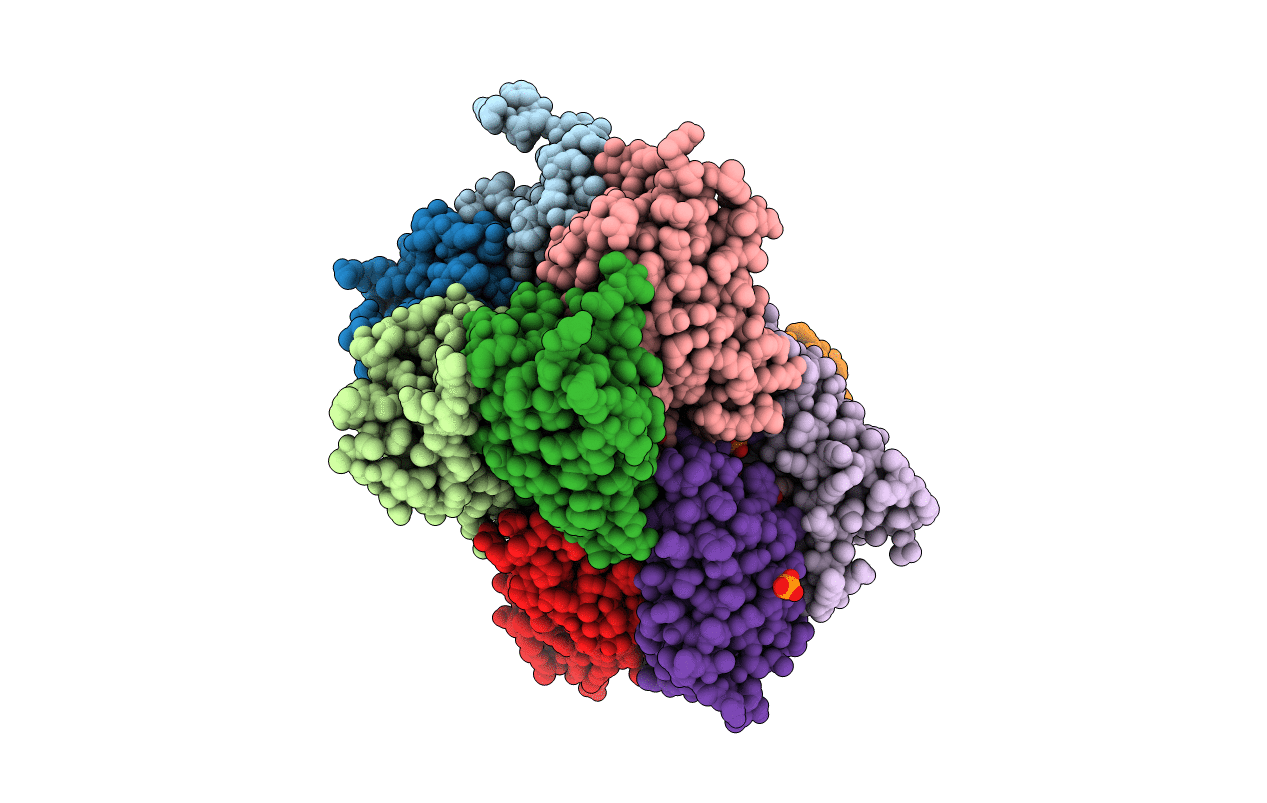
Deposition Date
2006-12-20
Release Date
2007-08-14
Last Version Date
2023-08-30
Entry Detail
PDB ID:
2OBX
Keywords:
Title:
Lumazine synthase RibH2 from Mesorhizobium loti (Gene mll7281, Swiss-Prot entry Q986N2) complexed with inhibitor 5-Nitro-6-(D-Ribitylamino)-2,4(1H,3H) Pyrimidinedione
Biological Source:
Source Organism:
Mesorhizobium loti (Taxon ID: 381)
Host Organism:
Method Details:
Experimental Method:
Resolution:
2.53 Å
R-Value Free:
0.28
R-Value Work:
0.21
R-Value Observed:
0.21
Space Group:
C 1 2 1


